Review of algorithms for the insertion of peripheral intravenous catheters
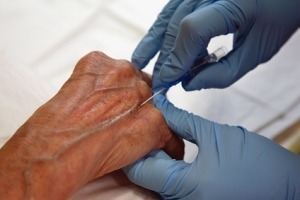
To provide a scoping review of decision aids for PIVC insertion including tools, clinical prediction rules, and algorithms (TRAs) and their findings on factors associated with insertion success” Carr et al (2017). Abstract: BACKGROUND: First-time peripheral intravenous catheter (PIVC) insertion success is dependent on patient, clinician, and product factors. Failed PIVC insertion are an under-recognized […]
Femoral catheter as a risk factor for catheter-related thrombosis in neonates

We performed a retrospective cohort study in all neonates (gestational age ≥34 wk) with CVCs. The primary outcome was the occurrence of thrombosis in CVCs. The secondary outcomes were possible risk factors for thrombosis, the thrombotic incidence in FVCs, UVCs, and PICCs, and clinical aspects of thrombosis in these groups” Dubbink-Verheij et al (2017). Abstract: Central […]
Early planned removal of umbilical venous catheters to prevent infection
Currently available trial data are insufficient to show whether early planned removal of umbilical venous catheters reduces risk of infection, mortality, or other morbidity in newborn infants. A large, simple, and pragmatic randomised controlled trial is needed to resolve this ongoing uncertainty” Gordon et al (2017). Abstract: BACKGROUND: Lengthy duration of use may be a […]
Nursing knowledge about subcutaneous administration of drugs and fluids in adults

To describe the evidence in the literature regarding the knowledge and practices of the nursing team about subcutaneous administration of drugs and fluids in adults” Gomes et al (2017). Abstract: OBJECTIVE: To describe the evidence in the literature regarding the knowledge and practices of the nursing team about subcutaneous administration of drugs and fluids in […]
Retention of PET radiopharmaceuticals within vascular access catheters
The purpose of this study was to resolve the issue of whether various generations of CR Bard peripheral vascular access ports and catheters are prone to retain PET radiopharmaceuticals” Gossman et al (2017). Abstract: PURPOSE: The purpose of this study was to resolve the issue of whether various generations of CR Bard peripheral vascular access […]
Simulation-based education for central venous access

We describe the effect of simulation-based education on residents’ adherence to protocols for and performance of central venous access” Jagneaux et al (2017). Abstract: OBJECTIVE: We describe the effect of simulation-based education on residents’ adherence to protocols for and performance of central venous access. [ctt link=”jDpaG” template=”1″]ReTweet if useful… Simulation-based education for central venous access […]
Patient satisfaction and experience with intravenously administered C1-inhibitor

The survey results identified clinical challenges with IV HAE medication use, including venous access issues and ongoing monthly attack occurrence despite prophylactic C1-INH(IV) administration” Riedl et al (2017). Abstract: BACKGROUND: Hereditary angioedema (HAE) is a rare genetic disorder with substantial morbidity and mortality. Despite expanded choices for effective acute treatment, prophylactic options are more limited. […]
Attitudes to the prevention of central line-associated bloodstream infections

The objectives of the cross-sectional study were to delineate the knowledge, attitudes, and behavior among nurses regarding the prevention of central line-associated bloodstream infections (CLABSIs) and to identify their predisposing factors” Esposito et al (2017). Abstract: The objectives of the cross-sectional study were to delineate the knowledge, attitudes, and behavior among nurses regarding the prevention […]
Patient and nurse satisfaction with elastomeric pumps

The Comparing Home Infusion Devices (CHID) study plans to assess patient and nurse satisfaction with an elastomeric and electronic pump for delivering intravenous antibiotic treatment in the home” Hobbs et al (2017). Abstract: INTRODUCTION: Previous studies comparing satisfaction with electronic and elastomeric infusion pumps are limited, and improvements in size and usability of electronic pumps […]
Chemical stability of ceftolozane/tazobactam in elastomeric pumps

To determine the chemical stability of ceftolozane/tazobactam when reconstituted and stored over an extended time in the AccuFlo (EMED Technologies, El Dorado Hills, California) and I-Flow Homepump Eclipse (Halyard, Alpharetta, Georgia) elastomeric pumps compared with the results of the label-supporting studies in polyvinylchloride (PVC) bags” Terracciano et al (2017). Abstract: BACKGROUND: Elastomeric pumps are often used […]
Daily dosing of intravenous antibiotics administered at home

The use of portable programmable pump infusion and elastomeric devices allow efficient and safe infusions for most antimicrobials at home” González Ramallo et al (2017). Abstract: Hospital at Home units allows ambulatory treatment and monitoring of complex and serious infections. Nosocomial infections produce an extension of the stay in hospital often specifying long intravenous treatments […]
Needlestick injuries during surgery among operating room personnel

To investigate the predictors of NSIs preventive behaviors during surgery among operating room personnel based on a health belief model (HBM)” Fathi et al (2017). Abstract: BACKGROUND: Operating room personnel are at high risk of needlestick injuries (NSIs) and exposure to blood and body fluids. OBJECTIVE: To investigate the predictors of NSIs preventive behaviors during […]
Shift patterns and needle stick injury risk

This study investigates the relationship occurring between consecutive workdays, night-shifts, cumulative hours, forward-rotating shift schedules (morning-afternoon-night), and occupational NSSIs frequency” d’Ettorre (2017). Abstract: OBJECTIVES: The prevention of needlestick and sharp injuries (NSSIs) among registered nurses (RNs) employed in hospital wards represents an important issue. Accidental contact with blood, consequent to NSSIs, is the most frequent […]
Choice of resuscitative fluids in emergency department patients with sepsis

Balanced resuscitative fluids (BF) have been associated with decreased incidence of hyperchloremic metabolic acidosis in sepsis” Sethi et al (2017). Abstract: Objective: Balanced resuscitative fluids (BF) have been associated with decreased incidence of hyperchloremic metabolic acidosis in sepsis. We hypothesized that higher proportions of BF during resuscitation would thus be associated with improved mortality in […]
Chlorhexidine gluconate bathing practices and skin concentrations
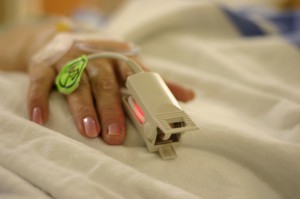
Daily bathing with chlorhexidine gluconate (CHG) has been found to be effective in preventing infections in intensive care unit (ICU) patients” Alserehi et al (2017). “Daily bathing with chlorhexidine gluconate (CHG) has been found to be effective in preventing infections in intensive care unit (ICU) patients.1 Although most studies use preimpregnated CHG wipes; hospitals often […]
Dynamic ultrasound-guided short-axis needle tip navigation in children

Dynamic ultrasound-guided short-axis needle tip navigation is a novel technique for vascular access” Hanada et al (2017). Summary Dynamic ultrasound-guided short-axis needle tip navigation is a novel technique for vascular access. After venipuncture, the needle and catheter are further advanced within the vessel lumen under real-time ultrasound guidance with constant visualisation of the needle tip […]
Ultrasonographically-guided peripheral internal jugular line

The peripheral internal jugular line is another option for vascular access that was originally described in 2009” Gottlieb and Russell (2017). Introduction: “Vascular access is an essential procedure in the emergency department (ED). In patients with difficult intravenous access, alternatives to the traditional blind cannulation should be considered, including cannulation of an external jugular vein, […]
Administration of intradermal hyaluronidase after amiodarone extravasation
Administration of intradermal hyaluronidase after amiodarone extravasation was associated with decreased expansion of erythema and warmth as well as an improvement in patient-reported pain scores without any noted adverse effects” Fox et al (2017). Abstract: Purpose: The case of a patient who experienced extravasation while receiving amiodarone via a peripheral infusion and was treated with […]
Anatomy and physiology relevant to intraosseous cannula insertion
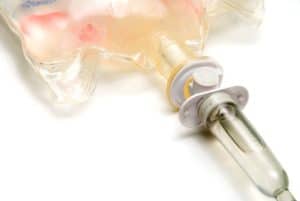
In an emergency situation when intravenous (IV) access cannot be rapidly achieved, the intraosseous (IO) route is recommended in order to infuse medications and fluids” Bewick (2017). Abstract: In an emergency situation when intravenous (IV) access cannot be rapidly achieved, the intraosseous (IO) route is recommended in order to infuse medications and fluids. Specifically designed […]
Impact of sterile tubing change technique in CLABSI reduction efforts
To evaluate the ability to sustain and further reduce central line-associated bloodstream infection (CLABSI) rates in NICUs participating in a multicenter CLABSI reduction collaborative and to assess the impact of the sterile tubing change (TC) technique as an important component in CLABSI reduction” Pallotto et al (2017). Abstract: OBJECTIVES: To evaluate the ability to sustain […]
Mortality among critically-ill patients with central line-associated bloodstream infections

We identified Gram-negative bacteria as leading pathogens of CLABSIs in a Taiwan medical center, and good compliance to care bundle is associated with reduced CLABSI incidence rate” Kuo et al (2017). Abstract: BACKGROUND/PURPOSE: For high risk of central line-associated bloodstream infections (CLABSIs) in patients of intensive care units (ICUs) and scarcely epidemiology and therapeutic recommendations […]
Rapid method for the evaluation of central venous catheter microbial colonization

Adherent bacteria and biofilm frequently colonize central venous catheters (CVCs). CVC colonization is correlated to infections and particularly to bloodstream ones” Rosa et al (2017). Abstract: Adherent bacteria and biofilm frequently colonize central venous catheters (CVCs). CVC colonization is correlated to infections and particularly to bloodstream ones. The classical microbiological methods to determine of CVC […]
Efficacy of topical chamomile on the incidence of infusion phlebitis
The aim of this study was to evaluate the effect of topical chamomile on the incidence of phlebitis due to the administration of an amiodarone infusion into the peripheral vein” Sharifi-Ardani et al (2017). Abstract: BACKGROUND: Amiodarone is a useful antiarrhythmic drug. Phlebitis, caused by intravenous amiodarone, is common in patients in coronary care units […]
Efficacy of near-infrared devices in facilitating peripheral intravenous access in children
To determine the efficacy of near-infrared devices in facilitating peripheral intravenous access in children, using a systematic review and meta-analysis” Kuo et al (2017). Abstract: BACKGROUND: Peripheral intravenous access is a common and invasive procedure that is performed in pediatric clinical settings. Children often have difficult intravenous-access problems that may not only increase staff stress […]
Surveillance bias influences CLABSI outcomes

A systematic literature review was conducted to examine whether surveillance bias influences the validity of selected Patient Safety Indicator- and health care associated infection-related measures” Chen et al (2017). Abstract: Surveillance bias may threaten the accuracy of inpatient complication measures. A systematic literature review was conducted to examine whether surveillance bias influences the validity of […]
Impact of care bundle approach to reduce CLABSI rates
The care bundle approach is a set of evidence-based practices that when performed collectively and reliably have been shown to improve the patient outcome” Prakash et al (2017). Abstract: CONTEXT: The care bundle approach is a set of evidence-based practices that when performed collectively and reliably have been shown to improve the patient outcome. [ctt […]
Skin antisepsis with 0.05% sodium hypochlorite before central venous catheter insertion in neonates

The study reports a 2-year single-center experience of the practice of skin antisepsis using a 0.05% sodium hypochlorite solution before central venous catheter placement in neonates” Ciccia et al (2017). Abstract: AIM: The study reports a 2-year single-center experience of the practice of skin antisepsis using a 0.05% sodium hypochlorite solution before central venous catheter […]
Infusion-related phlebitis rates when using needleless connectors
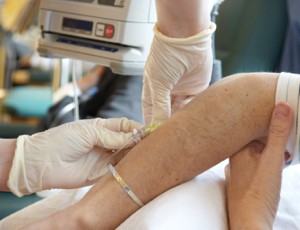
We conducted a study to investigate the impact of needleless intravenous access devices on the rate of phlebitis in peripheral venous catheters (PVCs)” Ronen et al (2017). Abstract: BACKGROUND: The use of intravascular catheters is often complicated by phlebitis, which is associated with increased morbidity and extended duration of hospitalization. We conducted a study to […]
Insertion technique for totally implantable venous access devices
PP of the internal jugular vein with ultrasonography appears to be the method of choice for TIVAD insertion owing to its similar success rate in terms of implantation and complication rate to that in SC, with shorter procedural times in pediatric patients” Choi et al (2017). Abstract: PURPOSE: Totally implantable venous access devices (TIVADs) are […]
Totally implanted venous access ports and bacterial composition
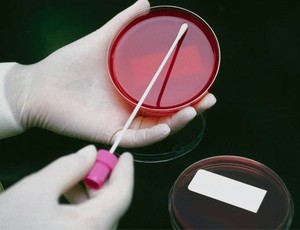
This study therefore provides a new view of bacterial communities and colonization patterns in intravascular TIVAPs and suggests that microbial ecology approaches could improve our understanding of device-associated infections and could be a prognostic tool to monitor the evolution of bacterial communities in implants and their potential susceptibility to infections” Stressmann et al (2017). Abstract: […]

